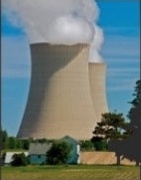Seven years after the start of the Fukushima Daiichi nuclear disaster and one year after the Japanese government lifted evacuation orders in areas of Namie and Iitate, radiation levels remain too high for the safe return of thousands of Japanese citizen evacuees. That is the conclusion of Greenpeace’s latest extensive radiation survey in Namie and Iitate, Fukushima prefecture. As a result of being invited by local citizens, Greenpeace was able to continue its survey work in Iitate, while also extending it to select homes in the highly contaminated exclusion (difcult to return) zone of Namie. Radiation risks, long term dose estimates and revision of targets In the areas of Iitate and Namie where evacuation orders were lifted in March 2017, contamination will remain well above international maximum safety recommendations for public radiation exposure of 1 milisievert per year (1mSv) for many decades. Greenpeace includes projections on dose rates to mid-21st century, which show that they will still be well in excess of the current government long term target levels of 0.23 micro-Sieverts per hour (µSv/h ). It is this target level that the government uses for its calculation to reach an estimated annual exposure level of 1mSv/y. The government calculation is based on citizens spending an average of 8 hours per day outside and taking account of shielding from radiation while inside a wooden house. Unless otherwise stated in the text, the Greenpeace calculation of annual human dose rates are based on radiation measurements taken at 1 meter, and what an adult’s exposure would be over one full year (total of 8,760 hours) at that specifc location.
In the case of radiation levels in the highly contaminated exclusion zone of Namie the situation is even more severe. It will be at least many decades more, and beyond the end of this century, before they start to even approach government targets. The Japanese government is well-aware of scientifc evidence of cancer and other health risks from low-dose radiation exposure, including in the range of 1-5 mSv/y. It has even part funded such research.1
Yet the government has opened areas of Namie and Iitate where citizens will be exposed to rates equal to this and higher, choosing instead to ignore the science to justify its Fukushima policies.
In a clear admission of the failure of its decontamination program, the Japanese government has recently begun a process to revise the current long term decontamination target of 0.23 µSv/h. In January 2018, during discussions on dose estimates for returning evacuees, the chair of the Nuclear Regulation Authority (NRA) stated that the current target “could hinder evacuees’ return home.”2 It has been insinuated that the new target would be in the 1.0 µSv/h range. The review of the target is to be conducted under the auspices of the Radiation Council of NRA.
Given the extent of contamination and the failure and limited nature of the decontamination program, radiation levels in Namie and Iitate are many decades and longer from reaching the current target.
Namie exclusion zone
The results of Greenpeace’s extensive survey around houses, farmland and forest in the Namie exclusion zone reveal radiation levels that far exceed the government’s long term decontamination target of 0.23 µSv/h. Average dose rates around homes between 25 km and 30 km northwest of the Fukushima Daiichi nuclear plant ranged from 1.3 – 3.4 µSv/h, with even higher levels in nearby forests and farmland. The home of Ms. Kanno in Namie, despite being subjected to an extensive decontamination program, had radiation levels with a weighted average of 1.3 μSv/h and with a maximum level of 5.8 µSv/h. In 60% of the nearby forested area current radiation levels would lead to an exposure dose of 17 mSv/y.
Radiation levels in the community of Obori in Namie, which is 20km west-north-west of the Fukushima Daiichi plant, were particularly concerning. This included measurements of 11.6 μSv/h, which would lead to an annual exposure of 101 mSv. […]
Featured Topics / 特集
-

A nuclear power plant in Byron, Illinois. Taken by photographer Joseph Pobereskin (http://pobereskin.com). カレンダー
-
Latest Posts / 最新記事
- U.S. Solar and Wind Power Generation Tops Nuclear for First Time via OilPrice.com 2024/07/15
- The long path of plutonium: A new map charts contamination at thousands of sites, miles from Los Alamos National Laboratory via Searchlight New Mexico 2024/07/09
- LANL plans to release highly radioactive tritium to prevent explosions. Will it just release danger in the air? via Searchlight New Mexico 2024/07/09
- US Spent $98,000 Per Minute on Nuclear Weapons in 2023, New Report Says via Truthout 2024/06/17
- 1億4000万円かけた対策は「ポーズ」と住民は見透かす 要支援者向け「被ばく防止施設」に担架が入らない via 東京新聞 [後編] 2024/06/11
Discussion / 最新の議論
- Leonsz on Combating corrosion in the world’s aging nuclear reactors via c&en
- Mark Ultra on Special Report: Help wanted in Fukushima: Low pay, high risks and gangsters via Reuters
- Grom Montenegro on Duke Energy’s shell game via Beyond Nuclear International
- Jim Rice on Trinity: “The most significant hazard of the entire Manhattan Project” via Bulletin of Atomic Scientists
- Barbarra BBonney on COVID-19 spreading among workers on Fukushima plant, related projects via The Mainichi
Archives / 月別アーカイブ
- July 2024 (3)
- June 2024 (3)
- March 2024 (1)
- February 2024 (6)
- January 2024 (4)
- November 2023 (8)
- October 2023 (1)
- September 2023 (7)
- August 2023 (5)
- July 2023 (10)
- June 2023 (12)
- May 2023 (15)
- April 2023 (17)
- March 2023 (20)
- February 2023 (19)
- January 2023 (31)
- December 2022 (11)
- November 2022 (12)
- October 2022 (7)
- September 2022 (6)
- August 2022 (22)
- July 2022 (29)
- June 2022 (15)
- May 2022 (46)
- April 2022 (36)
- March 2022 (47)
- February 2022 (24)
- January 2022 (57)
- December 2021 (27)
- November 2021 (32)
- October 2021 (48)
- September 2021 (56)
- August 2021 (53)
- July 2021 (60)
- June 2021 (55)
- May 2021 (48)
- April 2021 (64)
- March 2021 (93)
- February 2021 (69)
- January 2021 (91)
- December 2020 (104)
- November 2020 (126)
- October 2020 (122)
- September 2020 (66)
- August 2020 (63)
- July 2020 (56)
- June 2020 (70)
- May 2020 (54)
- April 2020 (85)
- March 2020 (88)
- February 2020 (97)
- January 2020 (130)
- December 2019 (75)
- November 2019 (106)
- October 2019 (138)
- September 2019 (102)
- August 2019 (99)
- July 2019 (76)
- June 2019 (52)
- May 2019 (92)
- April 2019 (121)
- March 2019 (174)
- February 2019 (146)
- January 2019 (149)
- December 2018 (38)
- November 2018 (51)
- October 2018 (89)
- September 2018 (118)
- August 2018 (194)
- July 2018 (22)
- June 2018 (96)
- May 2018 (240)
- April 2018 (185)
- March 2018 (106)
- February 2018 (165)
- January 2018 (241)
- December 2017 (113)
- November 2017 (198)
- October 2017 (198)
- September 2017 (226)
- August 2017 (219)
- July 2017 (258)
- June 2017 (240)
- May 2017 (195)
- April 2017 (176)
- March 2017 (115)
- February 2017 (195)
- January 2017 (180)
- December 2016 (116)
- November 2016 (115)
- October 2016 (177)
- September 2016 (178)
- August 2016 (158)
- July 2016 (201)
- June 2016 (73)
- May 2016 (195)
- April 2016 (183)
- March 2016 (201)
- February 2016 (154)
- January 2016 (161)
- December 2015 (141)
- November 2015 (153)
- October 2015 (212)
- September 2015 (163)
- August 2015 (189)
- July 2015 (178)
- June 2015 (150)
- May 2015 (175)
- April 2015 (155)
- March 2015 (153)
- February 2015 (132)
- January 2015 (158)
- December 2014 (109)
- November 2014 (192)
- October 2014 (206)
- September 2014 (206)
- August 2014 (208)
- July 2014 (178)
- June 2014 (155)
- May 2014 (209)
- April 2014 (242)
- March 2014 (190)
- February 2014 (170)
- January 2014 (227)
- December 2013 (137)
- November 2013 (164)
- October 2013 (200)
- September 2013 (255)
- August 2013 (198)
- July 2013 (208)
- June 2013 (231)
- May 2013 (174)
- April 2013 (156)
- March 2013 (199)
- February 2013 (191)
- January 2013 (173)
- December 2012 (92)
- November 2012 (198)
- October 2012 (229)
- September 2012 (207)
- August 2012 (255)
- July 2012 (347)
- June 2012 (230)
- May 2012 (168)
- April 2012 (116)
- March 2012 (150)
- February 2012 (198)
- January 2012 (292)
- December 2011 (251)
- November 2011 (252)
- October 2011 (364)
- September 2011 (288)
- August 2011 (513)
- July 2011 (592)
- June 2011 (253)
- May 2011 (251)
- April 2011 (571)
- March 2011 (494)
- February 2011 (1)
- December 2010 (1)
Top Topics / TOPトピック
- anti-nuclear
- Atomic Age
- Capitalism
- East Japan Earthquake + Fukushima
- energy policy
- EU
- France
- Hanford
- health
- Hiroshima/Nagasaki
- Inequality
- labor
- Nuclear power
- nuclear waste
- Nuclear Weapons
- Radiation exposure
- Russia/Ukraine/Chernobyl
- Safety
- TEPCO
- U.S.
- UK
- エネルギー政策
- メディア
- ロシア/ウクライナ/チェルノブイリ
- 健康
- 公正・共生
- 兵器
- 再稼働
- 労働における公正・平等
- 原子力規制委員会
- 原発推進
- 反原発運動
- 大飯原発
- 安全
- 広島・長崎
- 廃炉
- 東京電力
- 東日本大震災・福島原発
- 汚染水
- 米国
- 脱原発
- 被ばく
- 資本主義
- 除染
- 食の安全
Choose Language / 言語



